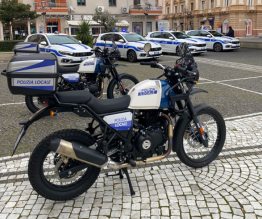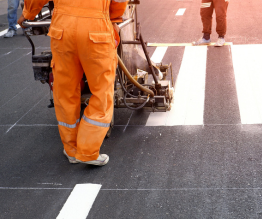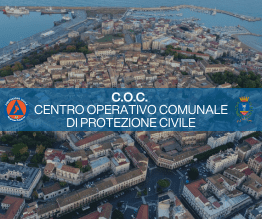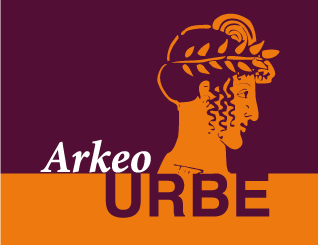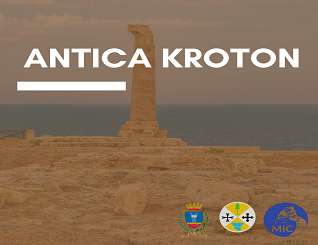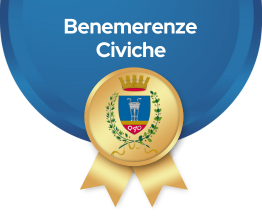Tourist Itineraries
Itinerary in Old Town
Archaeological Itinerary
Itinerary in Old Town
Estimated Time: 1 hour and 30 minutes
Type of Course: on foot
Stages:
· Cathedral · Olivieri-Susanna house
· House of Culture · Sculco Palace
· The Immaculate's Church · Lucifero Palace (branch of Apriglianello)
· Byzantine Walls · Grimaldi Palace
· St. Clare's Church · Giunti Palace
· Galluccio Palace · St. Mary's Church in Protospatariis
· St. Joseph's Church · De Mayda Palace
· Berlingieri House Place · Albani Palace (already called Suriano)
· Zurlo -Soda Palace · Berlingieri Palace
· Lucifero Palace · The Classical High school "Pitagora"
· Morelli Palace · War memorial of the First World War
· Barracco Palace

- Crotone Old Town
Description of the route:
Visiting the ancient Kroton means dive ourselves in his historical center: in the past it was enclosed within the city walls, most of them were demolished after the Italy's Unification. During several centuriesthe city was subjected by foreign dominations, whose the influence is reflectedin the heterogeneous style of its ancient center, that was characterized by narrow streets and little squares, which overlook palaces and churches. The proposed itinerary goes around the historic center, tracing the perimeter to reach the top of the hill, on whichstands the imposing fortress of Crotone, and then down towards the sea in the district Pescheria and finish the tour in Umberto I Square. We visit the interior of the Cathedral, in particular admiring the chapel where in the sacred icon of the Madonna di Capo Colonna is hosted.
Reaching the historical center, continue along Vittorio Emanuele Street, where in the left the Ex-TownHall is admired, which in the past it has been a monastery and the St. John of God Hospital.
The beautiful Church of the Immaculate, closes the street and inside of it , the crypt and the wooden sculpture of The crucified Christ are admired. Leaving the church behind us, weshall walk through in Risorgimento street. On the left there is a part of St. Clare Monastery, that is situated in the ancient streets of the old town centre, with the beautiful adjoiningchurch.
Returning to Risorgimento street, remember toadmire Gallucci Palace with the garden on the other side of the road which stretches along the bastion and out of the Eighteenth-Century Church of St.Joseph, that closes the uphill road. Continuing the trail we pass in front ofthe historic buildings: Berlingeri Palace and Zurlo-Soda Palace. In front of the last building, the archaeological museum of Crotone rises up. Continuing along Risorgimento street, two other noble palaces can be seen: LuciferoPalace, with a portal characterized by the coat of arms of the family andMorelli Palace, with twins facades.
As soon as we arrive in Castle Square, the castle fortress of Crotone, Barracco Palace (into which houses the MACK, the museum of Contemporary Art) and St. Salvator Church can be seen. Go into the heart of the old town centre, the wonderful portal ofOlivieri-Susanna House, Sculco Palace and Lucifero Palace (branch of Apriglianello) may be contemplated.
Coming down on Fosso street, wego along the Municipal Garden, visible from above, while on the left Grimaldi Palace can be appraised. Wedescend from Fosso street to reach Giunti Palace and penetrating inside of Suriano street, passing in front of St. Mary Church in Protospatariis, we cometo De Mayda Palace. Continuing towards the sea, wemay note the secret exit the Pescheria. The trail comes out on Regina Margheritastreet and proceeds to Umberto I Square, where Albani Palace (already called "Suriano"), Berlingeri Palace, the "Pythagoras" Classical High school and the War memorial of the First World War can be admired.
Archaeological Itinerary
Expected time: ½ day
Type of Course: by car and on foot
Stages:
· Archaeological Park of Capo Colonna
· Archaeological Museum of Capo Colonna
· National Archaeological Museum of Crotone

- Capo Colonna Archaelogical Area
A multitude of tracks testify the Ancient Greek Period, perhaps the most productive that Crotone has ever known: the promontory of Capo Colonna, which houses the only remaining symbol of theancient history of the city:
a Doric column remained , which carries the echo of the glorious splendor of this historical period. Cape column was one of the most important religious places in Magna Graecia, datesback to the 6th century BC, on which now stands the Archaeological Park. The itinerary starts in Capo Colonna, where we can admire the remains of the shrinededicated to the goddess Hera, continues with a visit to the Archaeological Museum adjacent to the Park and ends at the National Archaeological Museum ofthe city.
In the locality of Capo Colonna, about 13 kilometers away from Crotone, there is the Archaeological Park of the same name,consisting of approximately 30,000 square meters of land assigned to the excavations which brought to light the foundations of various buildings andhome sites, with 20 hectares of Mediterranean forest wherein there are pleasantnature trails that lead from the Museum
to the only column of the Temple of Hera Lacinia,formerly called Lakinion Akron. The city of Crotone was in fact home to oneof the most famous sanctuaries of Magna Grecia, dedicated to Hera Lacinia. The ancient temple remains standing a single column, which has become the symbol ofthe city. The temple, peripteral, was composed of 48 columns in Doric style, of8 meters in height. Until 1638 the two columns were visible, one of which crashed due to a violent earthquake of that year.
A sacred road leading to the remains of the temple andof three buildings, referred to as "Building B", "Building H" and "Building K". Building B, rectangular in shape, is thought to be the oldest temple. Here the Golden Tiara was found preserved inthe National Archaeological Museum located in Crotone. The furnishings discoverednear the remains of the building H or or H Hestatorion, suggest that thisplace was used as a canteen and refreshment to travelers or priests, while thebuilding K or Katagonion was probably the guest quarters where visitors couldfind lodging. The two buildings dating back to IV century, when the Temple was already famous throughout Magna Grecia. Inside the sanctuary are documented, alsothe remains of the Roman period as the Balneum, a thermal building of modestsize and Domus, perhaps residential homes belonging to rich people, the nengaged in furnaces. Also dates back to the Roman period a part of city walls, which was to protect the altar sacred to Hera. On the promontory rises also a small church dedicated to the Madonna di Capo Colonna and an ancient watchtowercalled Tower of di Capo Nao or Nao Tower. In the Archaeological Park rises the Archaeological Museum of Capo Colonna and in the city, on Risorgimento street, lies the National Archaeological Museum.

